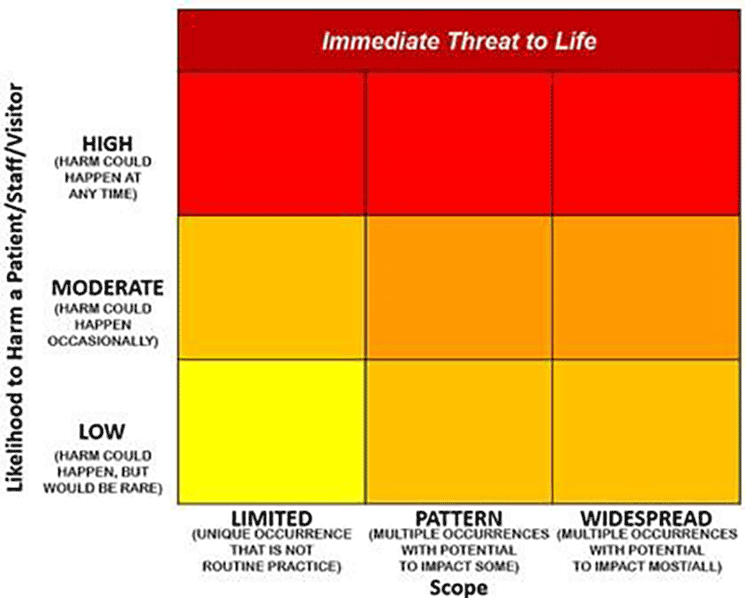The Joint Commission has recently announced a new approach for identifying and evaluating risk levels associated with deficiencies cited during surveys. This new approach, referred to as Survey Analysis for Evaluating Risk (SAFER) matrix, is intended to provide organizations with additional information related to the risk of deficiencies to assist them in prioritizing corrective actions. The SAFER Matrix became effective for psychiatric deemed hospitals on June 6, 2016 and will become effective for the remainder of accredited facilities on January 1, 2017. The matrix will illustrate areas of noncompliance at an aggregate level to show the extent (limited, pattern, widespread) and likelihood to harm (low, moderate, high) that cited deficiencies may cause in the event of a fire. At the end of the survey, the facility will be provided with a SAFER matrix within their Accreditation of Survey Findings Report as shown in the figure at left.
The SAFER Matrix replaces the current scoring methodology. Predetermined Elements of Performance (EPs) such as Categories A and C as well as Direct and Indirect impacts will no longer be utilized. Opportunities for Improvement, such as a single Category C finding, will no longer exist. Further, Measures of Success (MOS), which was previously used as an audit to determine if a certain action is effective and sustained, will not be required for certain Category C findings. Instead, surveyors will perform an on-site evaluation of identified deficiencies to place each EP within the appropriate cell according to the extent and likelihood to harm. Deficiencies of higher risk will still require an Evidence of Standards Compliance (ESC) to be developed and submitted by the facility related to corrective actions. Further, Immediate Threats to Life (ITLs) will be identified within the SAFER Matrix which will require the same follow-up process associated with potential Preliminary Denial of Accreditation.
Contact us if you want to know more about how the new SAFER Matrix will affect your future accreditation process.

